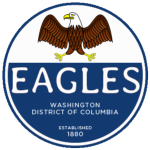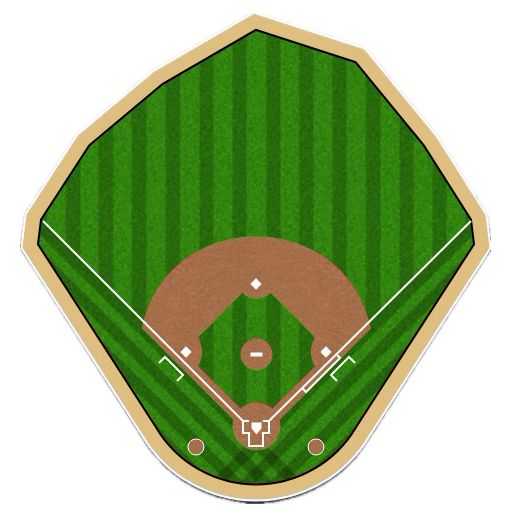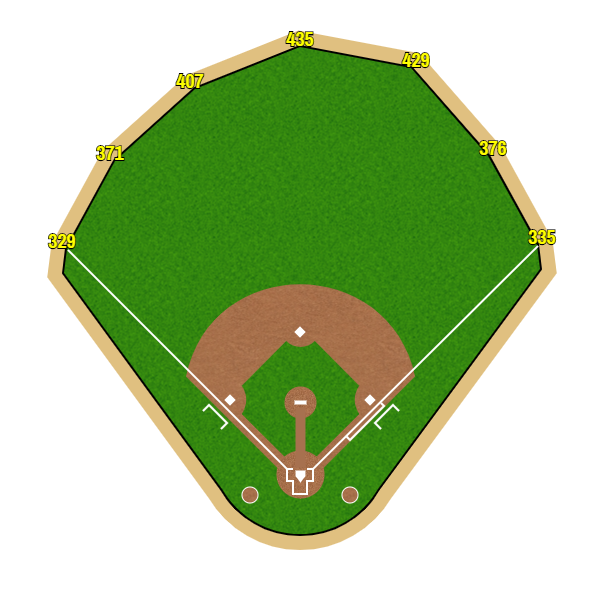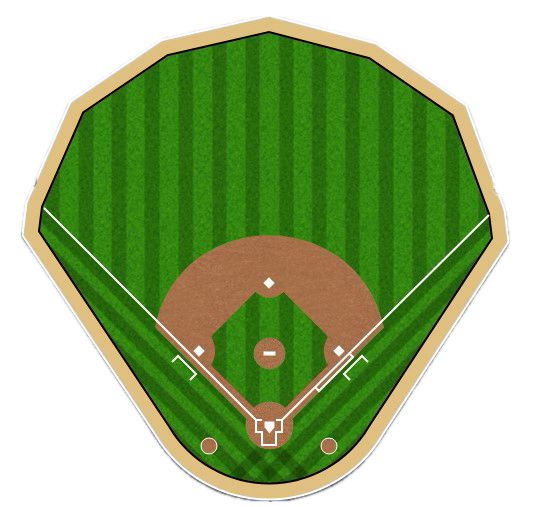Minneapolis Millers
 HTML Reports | StatsPlus Page HTML Reports | StatsPlus Page |
League Affiliation: Federal Association Founded: 1962 Ownership History: Frank Ham: 1962-
|
|
PENNANTS
|
WORLD CHAMPIONSHIPS
|
|
About the Minneapolis Millers The Millers were amongst the four expansion teams added to FABL for the 1962 season, joining the Los Angeles Suns as new additions to the Federal Association. Owned by Twins City native Frank Ham, the club plays in the brand-new Hennepin County Stadium.
|
|
Wilshire Park (1962-)
CAPACITY: 42500 |
|
Washington Eagles
 HTML Reports | StatsPlus Page HTML Reports | StatsPlus Page |
League Affiliation: Federal Association Founded: 1880 (Century League) Ownership History: James Banner: 1880-84 |
|
PENNANTS |
WORLD CHAMPIONSHIPS |
|
ABOUT THE WASHINGTON EAGLES Born as the Baltimore Bannermen in 1880, the Washington Eagles started off dismally but eventually became one of the Federal Association's cornerstone franchises. While in Baltimore, the club struggled to compete as then-owner James Banner would not invest enough money to acquire top talent, especially during the Border Wars and this resulted in him selling the club to William Whitney, who flipped it to Thomas Brennan, the son of one of Whitney's West Point classmates, who moved the team to Washington, invested heavily in it and worked to bring in top men to run the baseball operation. The result was successful - the Eagles had won eight pennants by 1925 and cemented their place in history. The team's connection to the military continued in 1929 when the team was purchased by retired U.S. Navy Admiral William Stockdale. Stockdale was a no-nonsense man who had commanded the USS Arizona during the First World War and was friendly with soon-to-be-President Franklin D. Roosevelt. Upon the Admiral's death in 1945, the ownership passed to his son, Navy Captain Calvin Stockdale. The younger Stockdale was then serving in the Pacific, and former OSA head Rufus Barrell acted as the club's President until after Captain Stockdale returned from the war. The club opened a new ballpark, Columbia Stadium, in 1939, and the new park has become a much-loved location for Eagles fans. Winning has been a challenge for the Eagles; since their pennant run ended in 1925, the team has won only one Fed pennant, that coming in 1946. |
|
|
Capitol Grounds (1907-38) BUILT: 1907 IN-USE: 1907-38 CAPACITY: 29450 ADDRESS: 899 North Capitol Street, Washington, DC |
|
Columbia Stadium (1939-) BUILT: 1939 IN-USE: 1939 - CAPACITY: 41776 ADDRESS: 1501 Eckington Pl NE, Washington, DC |
|
Toronto Wolves
 HTML Reports | StatsPlus Page HTML Reports | StatsPlus Page |
League Affiliation: Continental Association Formerly Known As: Toronto Provincials 1882-98 Founded: 1882 (Border Association) Ownership History: Thomas Watford: 1882-1902 |
|
PENNANTS |
WORLD CHAMPIONSHIPS |
|
ABOUT THE TORONTO WOLVES James Tice, founder of the Border Association, was many things (some of them unprintable - if you'd have asked, say, William Whitney), but chief amongst them, he was a visionary. He was the man who put two of his fledgling league's clubs in Canada - and both turned out to be successful. The Toronto Provincials (as they were originally known) were owned by Thomas Watford, a successful Toronto businessman, whose main sporting interests were polo and hockey. Of baseball, he knew little, but he was a quick learner and came to be one of the shrewdest owners in FABL. The Provincials won the very first Border Association pennant, with Watford exclaiming "that was such fun, let's do it again next year!" - well, next year didn't come for Toronto until 1898. That 1898 season was a special one for Toronto's club - the fans referred to the scrappy group that won that 1898 Continental Association pennant "Watford's Wolves" - a moniker the owner liked so much, he made it official. The Provincials were now the Wolves. Watford died in 1902, leaving the team to his sister's son, Albert "Bert" Thomas, who had worked as Watford's right-hand man for over a decade and so was fully informed about the club he had inherited. Thomas oversaw a team that won three pennants in six years (1904, 09 & 11) and was instrumental in getting the provincial government to help fund a downtown ballpark for his club that opened to rave reviews in 1924. Millard's tenure was contentious. He became one of the most vocal - and disliked - owners in baseball. He was known to be cheap, possessing a fiery temper, and to top it off, believed he knew better than the many experts unlikely enough to be employed by him. Millard held on to the club until his death in December 1961, and his heirs, more intent upon the coal mining business, sold the team to Kingston, Ontario-native Robert A. Smith, known (and liked) as Bob Smith. One of Smith's early goals was to improve the much-loved, but now outdated, Dominion Stadium. His planned improvements included increased seating, fan amenities and additional parking, the latter an easily achievable goal as real-estate mogul Smith owned large parcels of land near the ballpark. |
|
|
Dominion Stadium (1924-) BUILT: 1924 (scheduled for 1963 refurbishment) CAPACITY: 37592 ADDRESS: 235 Queen Street East, Toronto, ON |
|
St. Louis Pioneers
 HTML Reports | StatsPlus Page HTML Reports | StatsPlus Page |
League Affiliation: Federal Association Formerly Known As: St. Louis Brewers (1882-88) Founded: 1882 (Border Association - moved to Century League, 1889) Ownership History: Hans Fuchs: 1882-86 |
|
PENNANTS |
WORLD CHAMPIONSHIPS |
|
ABOUT THE ST. LOUIS PIONEERS The St. Louis Pioneers might have the most interesting early history of any ballclub. Ask a St. Louis partisan and they will likely point out that the club's history goes back to 1876, just as it does for the Chicago Chiefs and Philadelphia Keystones. They are correct in that the forerunner of the Pioneers - the St. Louis Brewers - were a member of the Century League upon its 1876 birth. But... and here's where the official and fan histories differ - the Brewers left the CL (with the Cincinnati Monarchs) and that broke their historical lineage, even when they rejoined organized baseball in 1882 with the Border Association. The Pioneers also have a unique record unlikely to ever be matched - they are the only ballclub to win pennants in three different league organizations. They won Border Association pennants in both 1883 and '84, jumped to the Century League in 1889 and won two straight CL pennants in '89 and '90 and then won again in 1920 (and several more times later) as members of the Federal Association. The club's first owner, brewery magnate Hans Fuchs, was a devoted friend of Border Association founder (and Cincinnati owner) James Tice - following Tice out of the Century League and then joining him in forming the Border Association. His son George, who inherited the club upon Hans' death in 1886, was less devoted and seeing how Pittsburgh fared after jumping to the Century League, made his own jump in 1889. Because the Century League banned alcohol at its games, the Brewers became the Pioneers. George Fuchs wasn't much of a baseball man, and he sold off the Pioneers in 1893 to Paul Long, who passed the team to his son, Paul Jr, in 1911. Paul Long Jr. worked to build the club up, trading for slugger-non-pareil Max Morris and refurbishing the Pioneers' home park in 1925, increasing the seating capacity to take advantage of the big crowds who wanted to watch Morris slug baseball's into the stratosphere. In 1941 "Hollywood" Dee Rose purchased the club, ushering in an era of instability in the team office. A native of Los Angeles, Rose intended to move the club to California, which was rejected by the league. Then he promised to replace the aging, but classic, Pioneer Field. Rose also had criminal ties, which ultimately led him to being incarcerated and put the team under trustee for several seasons until Bob Clayton purchased the team from Rose's trustees. Clayton, a native of Missouri, pledged to keep the team right where it was, and also built a brand-new Pioneer Field across the street from the old venue.
|
|
|
PIONEER FIELD II (1910-53) BUILT: 1910 (Refurbished 1925, original wooden park on site built in 1882) CAPACITY: 47590 ADDRESS: 3950 Forest Park Ave, St. Louis, MO |
|
|
PIONEER FIELD III (1954-) BUILT: 1954 CAPACITY: 51250 ADDRESS: 3951 Forest Park Ave, St. Louis, MO |
|
Pittsburgh Miners
 HTML Reports | StatsPlus Page HTML Reports | StatsPlus Page |
League Affiliation: Federal Association Formerly Known As: Pittsburgh Quarries (1882-86) Founded: 1882 (Border Association - moved to Century League, 1887) Ownership History: Martin Elswich: 1886-1912 |
|
PENNANTS |
WORLD CHAMPIONSHIPS |
|
ABOUT THE PITTSBURGH MINERS The Pittsburgh Miners started out as the Quarries - one of the original clubs of the Border Association. The Quarries spent five seasons in the BA, winning the pennant in 1886 during the height of the "Border Wars" between the BA and the Century League. Quarries owner Martin Elswich, who had joined the Bordermen simply because the Century League wasn't willing to expand into Pittsburgh was an ambitious man always looking for an edge. So when CL President William Whitney approached Elswich during the fall of 1886 about bringing his club into the Century League, Elswich saw an opportunity and made his club the first in history to switch leagues. The Quarries were renamed the Miners after switching and spent the next six seasons as a Century League member and went with the other CL clubs into the Federal Association when the FABL organization was created in 1892. Elswich's club became a turn of the century powerhouse, winning four straight pennants from 1898 to 1901, although they lost the World Series in three of those years (no doubt to much delight amongst the old guard of the Continental Association who were born out of the old BA). Elswich's men won another pennant in '07 before the old man passed away in 1912. His estate sold the club to foundry owner Daniel X. Fitzpatrick who opened a brand-new ballpark made with Fitzpatrick Steel in 1923, naturally naming it after himself. Fitzpatrick sold the team in 1945 and Alphonse Maday took over. Fitzpatrick's daughter married pitcher Tom Barrell, who pitched (albeit briefly) for the Miners. There were rumors at the time that Barrell and his wife would attempt to repurchase the Miners, but this appears to have been simply that: rumor. |
|
|
FITZPATRICK PARK (1923-) BUILT: 1923 CAPACITY: 43100 ADDRESS: 1000 Ft. Duquesne Blvd., Pittsburgh, PA |
|
 BUILT: 1962
BUILT: 1962



